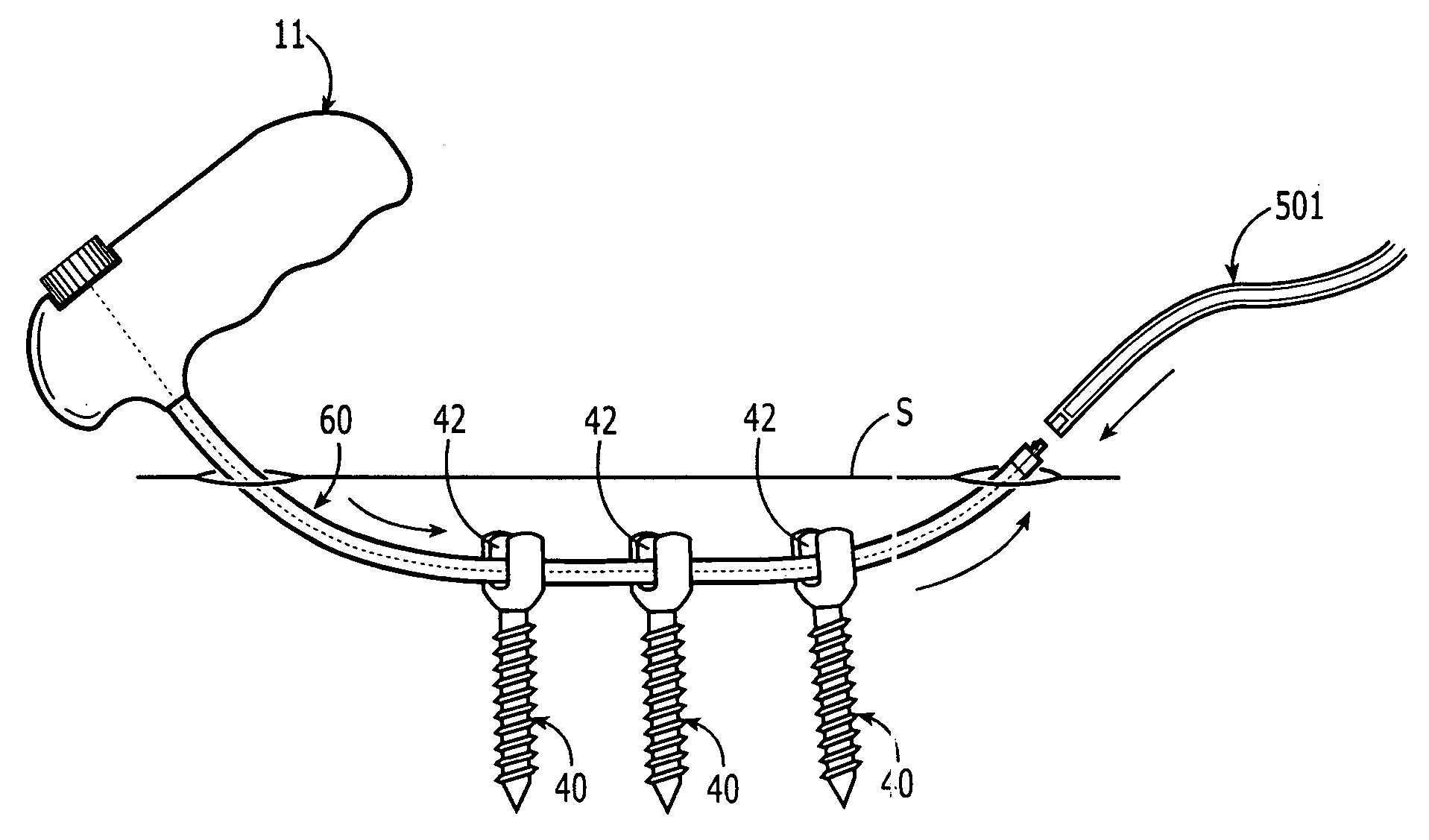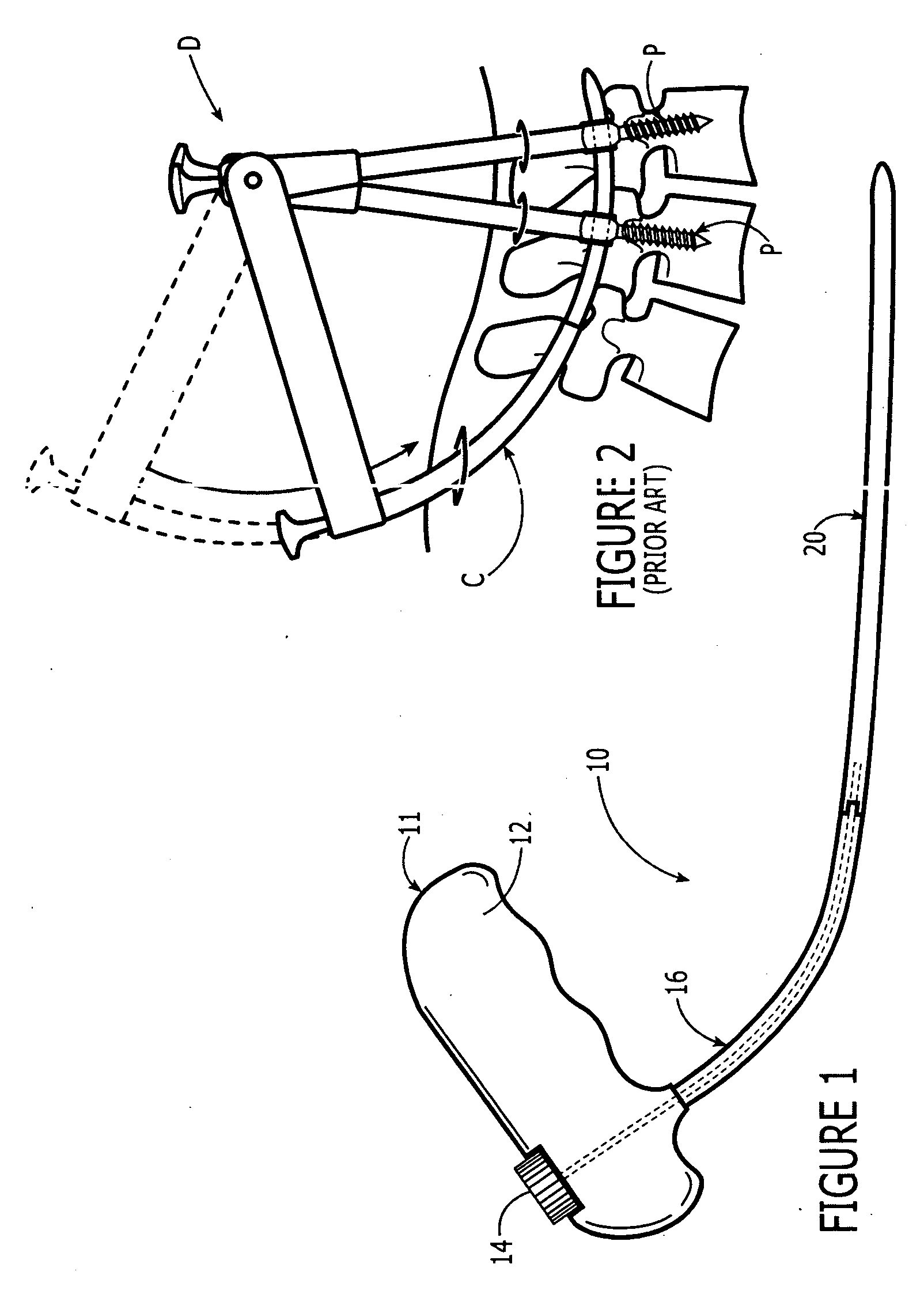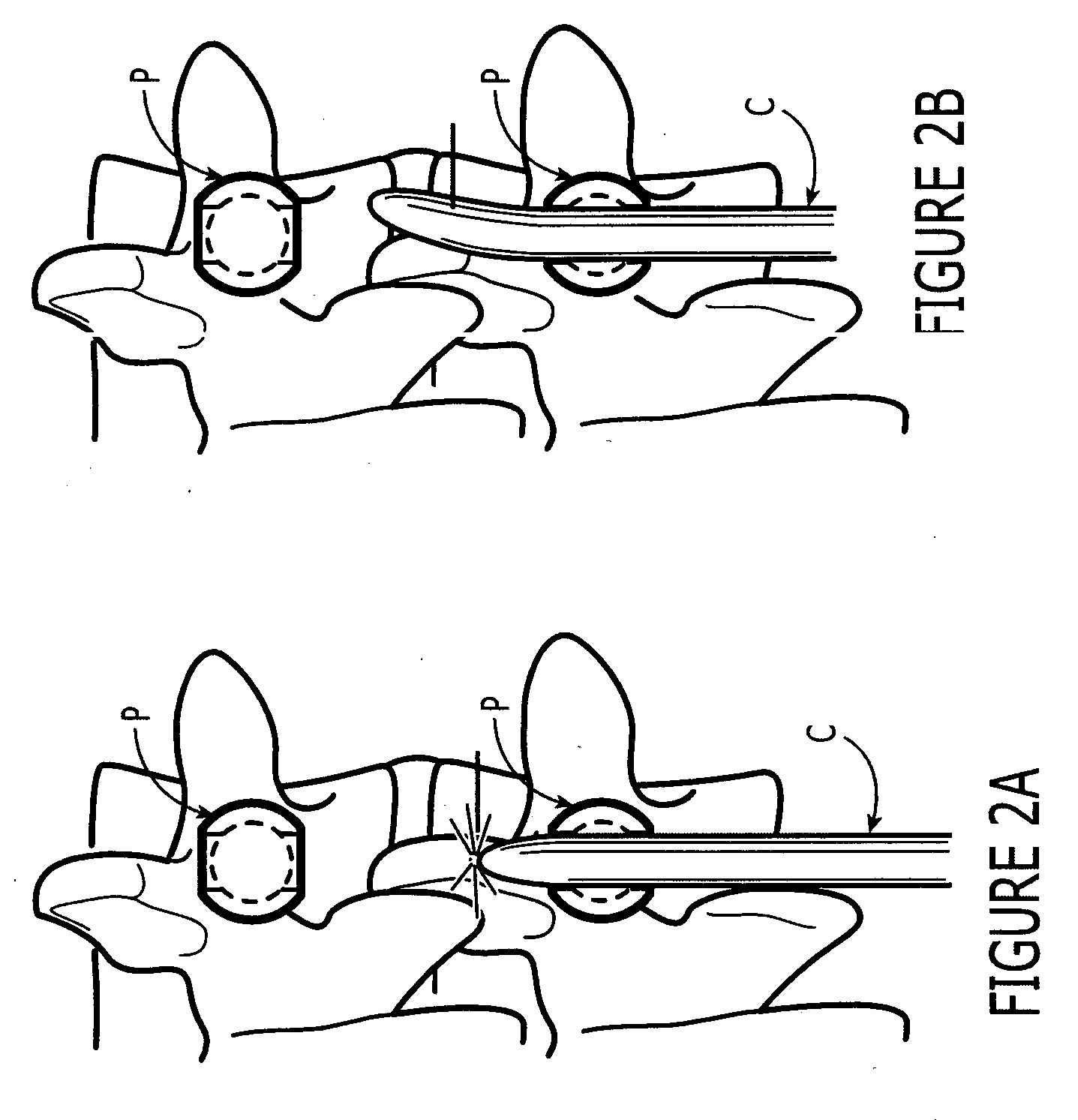Rod delivery device and method
a delivery device and rod technology, applied in the field of percutaneous rod delivery, can solve the problems of insufficient current technique, loss of structural integrity of the bony spine, and potentially catastrophic loss of neurological function or even paralysis,
- Summary
- Abstract
- Description
- Claims
- Application Information
AI Technical Summary
Benefits of technology
Problems solved by technology
Method used
Image
Examples
Embodiment Construction
[0095] Corresponding reference numbers indicate corresponding parts throughout the several views of the drawings and specification.
[0096]FIG. 1 illustrates an embodiment of the rod delivery device 10 of the present invention. Rod delivery device 10 includes a handle 11, a shaft 16 and a rod 20.
[0097]FIG. 2 illustrates a sextant type rod delivery device that primarily employs a rod delivery mechanism that delivers a fixation rod via a fixed trajectory along a fixed arc. While these “sextant” type devices are commonly used today and are highly successful for limited numbers of fixation points, they are of limited value for multiple fixation points and also when the contours of the human spine do not mirror the contour of the fixation rod the surgeon is attempting to use to fixedly connect pedicle screws using fixation rods. The sextant type rod delivery device D releasably holds a curved fixation rod C, also known as a rod, and delivers the rod by sweeping the rod C through an arc w...
PUM
 Login to View More
Login to View More Abstract
Description
Claims
Application Information
 Login to View More
Login to View More - R&D
- Intellectual Property
- Life Sciences
- Materials
- Tech Scout
- Unparalleled Data Quality
- Higher Quality Content
- 60% Fewer Hallucinations
Browse by: Latest US Patents, China's latest patents, Technical Efficacy Thesaurus, Application Domain, Technology Topic, Popular Technical Reports.
© 2025 PatSnap. All rights reserved.Legal|Privacy policy|Modern Slavery Act Transparency Statement|Sitemap|About US| Contact US: help@patsnap.com



